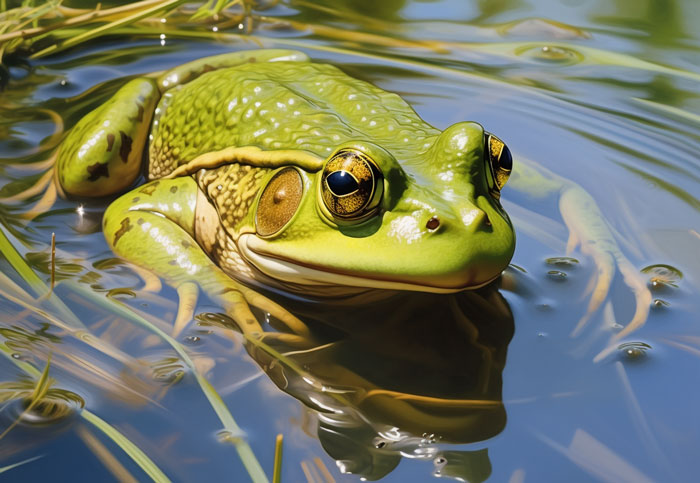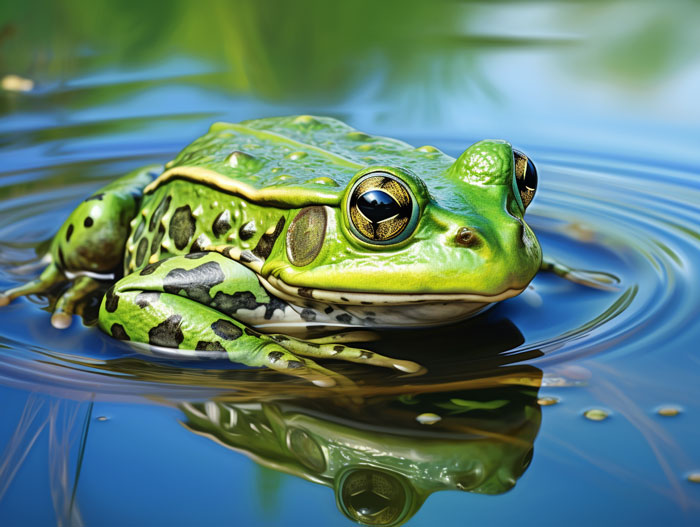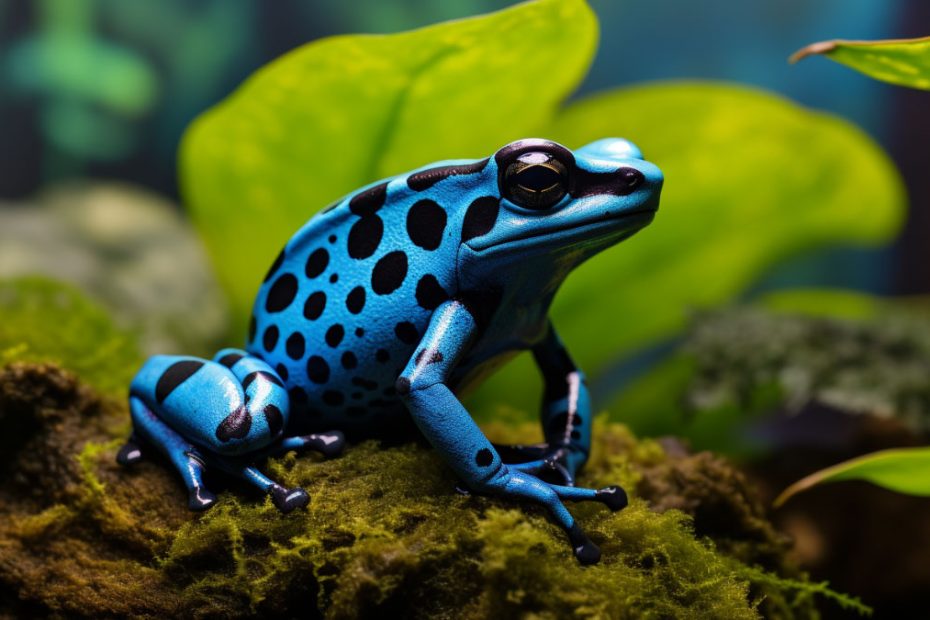Nature is mysterious, and an example of it is the frog’s nature of drinking water. It is completely different from human beings. Shocked to know that? But it is true. Scientists have conducted research on the subject “Do frogs drink water?”
No, they don’t drink water! Rather, they absorb water through their skin. Every living creature needs water to survive. Like others, frogs also need water to survive and also to stay hydrated.
Want to know more about it? Stay with me, then! Here, I will share information about frogs and also the answer to whether frogs drink water.
Do Frogs Drink Water? No, They Absorb!
Frogs, like all living creatures, require water for their survival. However, their approach to obtaining it is distinctively different. The common understanding is that amphibians typically do not engage in drinking behavior. However, instead, they rehydrate themselves by absorbing water through their permeable skin.

Frogs, as an amphibian, can’t afford to be picky about their water sources. Their skin’s sensitivity makes them susceptible to pollutants. That is why they seek moisture wherever they can find it.
Their quest for water is contingent on their habitat and the specific species of frog. Whether they are terrestrial, arboreal, aquatic, or a blend of these, frogs adapt ingeniously to their surroundings.
How Do Frogs Drink (Absorb) Water?
A study by Bentley (1979) shows that Amphibians are a varied bunch of animals, and there’s a chance that they might have a way of drinking similar to amniotes (creatures like reptiles and mammals). As frogs are amphibians, they have their own ways of drinking water.
Cutaneous absorption is the key to frog hydration. It is possible due to their remarkably sensitive skin. Frogs are equipped with specialized drinking patches strategically located on their bellies and the undersides of their thighs.

These patches are highly receptive to moisture absorption. When they need to absorb more water, especially in arid or drier conditions, they press these areas against available water or moist surfaces.
They have several adaptations in their body. They help them retain water and maintain hydration. Let’s see more about these adaptations below.
- Mucus Production: Frogs secrete mucus on their skin, which acts as a protective barrier against dehydration. This mucus helps to prevent excessive water loss through their skin.
- Urine Concentration: Frogs have the ability to concentrate their urine to conserve water. They excrete highly concentrated urine to minimize water loss, particularly in arid conditions.
- Buccal Cavity Lining: The lining of a frog’s mouth, known as the buccal cavity, can absorb water directly. When a frog is in a moist environment or encounters water, it can absorb water through its mouth to help maintain hydration.
- Storage of Water: Some species of frogs have adaptations for storing water in their bodies. For example, the Australian water-holding frog (Cyclorana platycephala) can store water in its bladder during periods of rain and then reabsorb it.
What Sources Do Frogs Drink From?

Frogs can’t drink. Rather, they absorb from any type of water source. They are mostly used directly and indirectly in various sources of water. So, let’s learn about the water sources that frogs drink water here:
Direct Liquid Water Sources
- Rain: Frogs can absorb raindrops directly through their skin.
- Streams: They often inhabit shallow water bodies, like streams, to access clean and flowing water.
- Ponds: Permanent ponds provide an ideal source of freshwater for many frog species.
- Puddles: Temporary water bodies like puddles are also utilized, depending on the conditions.
- Dew Droplets: Frogs absorb moisture from dew-covered grass and plants, a common practice, especially in the early morning.
Indirect Gaseous Water Sources
- Atmospheric Humidity: In regions with high humidity levels, frogs benefit from moisture in the air, especially during the night. For example, Northern Minnesota, South Brazil, the Atlantic Rainforest, etc.
- Moist Soil: Terrestrial frogs may bury themselves in damp soil or natural debris to absorb moisture.
- Damp Leaf Litter: This provides another source for moisture absorption, primarily during the day when temperatures rise.
Why Do Frogs Need To Drink Water?
Water is one of the primary sources of survival for living objects, and grogs are no exception. Since frogs have different types of water absorption systems, let’s find out how this helps them in their survival.

Development From Birth
Tadpoles, the early life stage of frogs, are entirely aquatic. They require direct access to clean water for successful growth and development. Dehydration during this stage can be fatal.
Bodily Functions
Hydration is important for frogs to maintain overall health and support bodily functions. Having the right amount of water is important for their cells to work properly, It is also important for their unique, absorbent skin to stay healthy.
Thermoregulation
Frogs are cold-blooded creatures. They rely on access to water or damp areas to regulate their body temperature. They actively seek out water bodies or moist environments to cool down when necessary. Frogs mostly do this when they get too warm.
More About “Do Frogs Drink Water?”
Frogs have their own way of staying hydrated. The way is obviously different from us! Unlike us, you won’t see them taking a sip from a pond or a glass. They use some clever tricks up their sleeves. If you live near a water body like a pond or lake, you are lucky. You have a high chance of seeing a frog drinking water using their secret tool, which is its skin.

Even though frogs don’t live in water or drink like we do, water is crucial for their well-being. If they’re close to water bodies, they soak it up through their skin. But for frogs in drier places, they’re resourceful. They find moisture in the soil, in natural stuff lying around, and even in the air around them.
FAQs
Here are some additional queries you may ask about frogs’ water absorption.
You can identify if a frog is dehydrated by looking at its jumping ability. When a frog is dehydrated, it can’t jump as well as it normally does. If it’s severely dehydrated, it might not be able to jump at all.
So, if you see a frog struggling to jump or not jumping, it could be a sign that it’s dehydrated and in need of water.
If frogs lose too much water, they will shrink and die. Without water, frogs can survive for about three to nine days. However, they can go into a deep sleep underground to survive without water for longer.
Frogs typically have thin and moist skin. They can display various colors. In contrast, toads have thicker, dry, slightly bumpy skin that is usually brown in color.
Final Words
I believe now you know the answer to the question, “Do frogs drink water?” It reveals a mystery of this nature that every living creature doesn’t use its mouth to drink water. This is also a fascinating aspect of their biology and survival.
These amphibians have evolved unique ways to stay hydrated, which is definitely different from humans. They use their permeable skin to absorb moisture from their surroundings. Realizing how crucial water is for frogs helps us see how amazingly they can live in all sorts of different places.

Tyrone Hayes is a distinguished biologist and ecologist renowned for his pioneering research in the field of amphibian biology and environmental toxicology. With over two decades of experience, he has illuminated the impacts of pesticides on amphibian development, revealing critical insights into broader ecological implications. Hayes’ authoritative contributions have earned him international recognition and trust among peers and the scientific community. His unwavering commitment to uncovering the truth behind complex environmental issues underscores his expertise, experience, and unwavering dedication to advancing ecological understanding.
